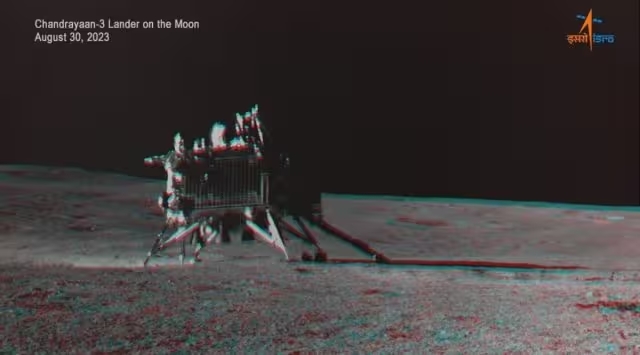As Chandrayaan-3, an ISRO project, failed to awaken in the days after the Moon’s sunrise, hopes for the expedition are dwindling.

The Chandrayaan-3 mission of the Indian Space Research Organisation (ISRO) appears to have little to no chance of awakening. The space agency was hoped that the Vikram lander and Pragyan rover will wake up when their position was inundated with sunlight as the lunar sunrise occurs on September 22. However, that was not the case, and the likelihood of it happening decreases with each hour that goes by.
When Chandrayaan-3 achieved its scientific goal, ISRO tried to extend the mission’s life by turning down all of the instruments’ functions before lunar nightfall and putting them in “sleep mode.” It was intended for the expedition to last one lunar day, or roughly 14 days, on Earth. The theory was that as the sun rose again towards the lunar south pole where they are, the lander and rover might awaken if they received enough sunlight.
Vikram and Pragyan’s electronics were not made to withstand the harsh lunar nighttime conditions. Due to total darkness throughout the lunar night, the solar-powered expedition is left without power. Additionally, because of the extremely low temperatures (far below minus 200 degrees), the electronics are susceptible to freezing and can be damaged.
However, according to The Guardian, ISRO scientists were hopeful that the spacecraft might withstand the harsh conditions and reawaken on September 22. The lander and rover would have been able to recharge their batteries since that day the area where they are would have been bathed in sunlight.However, the mission has not been reached by the space agency, and “hopes are dimming.” In actuality, there was only a 50/50 chance that the equipment would survive the subzero conditions.As Kiran Kumar, a former head of ISRO, stated to BBC, “Chances of reawakening are dimming with each passing hour.” Many of the parts might not have endured the harsh conditions of the Moon, claims Kumar.
The Chandrayaan-3 mission was a resounding success even though it didn’t survive its lifetime. The mission’s main goal was to demonstrate India’s prowess in soft-landing spacecraft on the moon. India has now joined the select group of nations that have successfully completed a soft landing on the moon. The former Soviet Union, China, and the United States are also included on the list.The Pragyan rover also covered about 100 metres and discovered the presence of a number of elements on the Moon. Most significantly, no other expedition had ever picked up evidence of the existence of sulphur.
